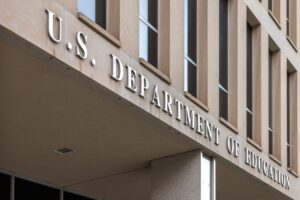For borrowers who can’t keep up with the federal loan payments, income-driven repayment plans (IDR) provide a critical lifeline. And, borrowers can enroll in the plans to pursue loan forgiveness under Public Service Loan Forgiveness (PSLF) or through IDR forgiveness.
However, the Trump administration has issued key challenges to these programs, and the impact to borrowers could be significant.
What Are Income-Driven Repayment Plans?
IDR plans allow qualifying borrowers to make smaller monthly payments. Rather than paying a fixed amount every month for 10 years like they would under a standard repayment plan, IDR plans base the payment amount on the borrower’s discretionary income and an extended loan term of 20 or 25 years.
Each year, the borrower must submit an update on their income — a process known as IDR recertification. As the borrower’s income changes, their payments can fluctuate, too.
Under the current structure of IDR plans, borrowers who make payments for the longer term and still have a balance at the end of it can qualify for a waiver. With an IDR waiver, the remaining balance is discharged, eliminating the borrower’s obligation to repay the outstanding amount.
Income-Driven Repayment News
The Trump Administration has issued several challenges against IDR plans, including the Saving on a Valuable Education (SAVE) plan that was introduced by President Biden toward the end of his presidency.
There are several changes listed in a Department of Education memorandum that borrowers should be aware of that:
IDR Plan Applications Are Paused Through May
Federal courts issued an injunction against the SAVE plan and, as a result, the Trump administration halted all IDR plan applications. The application is available, but loan servicers cannot process any applications at this time.
Processing is set to resume on May 10, 2025. However, borrowers can only apply for income-based repayment (IBR), income-contingent repayment (ICR), Pay As You Earn (PAYE). SAVE and Revised Pay As You Earn (REPAYE) — the plan that SAVE replaced — are not available, and are unlikely to resume.
The Changes Could Delay Your Eligibility for Loan Forgiveness
IDR plans play a pivotal role for borrowers pursuing loan forgiveness through Public Service Loan Forgiveness (PSLF) or IDR waivers.
As borrowers apply for an IDR plan and wait for their applications to be processed, their loans can be placed into forbearance. Borrowers whose loans are in forbearance can count the months of forbearance toward PSLF, but that’s not the case for IDR waivers. Any period you spend in forbearance won’t count toward the months you need to complete for an IDR waiver.
IDR Forgiveness Is Under Attack
According to StudentAid.gov, the court injunction applies to several areas, but one notable section focuses on how loan forgiveness applies to borrowers on IDR plans. The Trump administration and Republicans have threatened to eliminate or challenge IDR forgiveness when borrowers reach the end of their repayment terms, potentially eliminating this essential benefit.
Public Service Loan Forgiveness May Change
In an executive order, President Trump issued a plan for “Restoring Public Service Loan Forgiveness.”
Currently, borrowers who work for a government agency or non-profit organization full-time for 10 years and make 120 qualifying monthly payments can qualify for forgiveness of their remaining balance. However, President Trump’s executive order would adjust the rules, eliminating some organizations’ eligibility as qualifying employers.
Non-profits that have missions contrary to the Trump administration’s policies would no longer count as eligible employers, and borrowers employed by those organizations wouldn’t be eligible for PSLF.
What This Means for Borrowers
These changes can feel drastic and overwhelming. If you’re a current borrower, here are some tips for how to move forward:
- Keep making payments: Although there have been many changes to the student loan system, you’re still obligated to repay your loans. Continue making your payments by their due dates to avoid costly penalties like wage garnishment and late fees.
- Stay in contact with your loan servicer: If you cannot afford your payments, contact your loan servicer right away to discuss your options. Even though the IDR plan application is not being processed right now, you can still submit your application and enter forbearance until the loan servicer can process it.
- Don’t panic: The changes the Trump administration have posted are significant, but they will likely face legal and political challenges, and it will take some time to sort those out.



